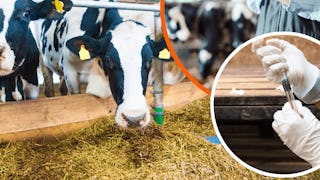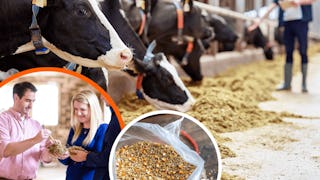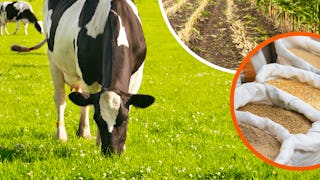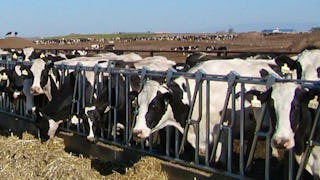This course provides an in-depth look at mastitis in dairy cows, focusing on the immune response, diagnostic tools, and economic considerations. Learners will explore the cellular and microbial basis of intramammary infections, practical tools for on-farm diagnosis, and the financial impact of mastitis on dairy operations. Through a systems-thinking approach, students will gain the knowledge needed to make informed decisions about mastitis prevention and treatment strategies.

Discover new skills with 30% off courses from industry experts. Save now.


What you'll learn
Describe the immune mechanisms involved in intramammary infections.
Analyze the economic impact of mastitis and evaluate treatment decisions using decision trees and cost models.
Apply diagnostic tools such as somatic cell counts and on-farm culturing.
Identify common mastitis-causing pathogens and their characteristics.
Skills you'll gain
Details to know

Add to your LinkedIn profile
August 2025
6 assignments
See how employees at top companies are mastering in-demand skills

There are 4 modules in this course
In the course orientation, you'll get to know the course, your classmates, and our learning environment, and gain the technical skills needed. Then, take a closer look at the immune system’s role in defending the mammary gland. You'll explore both general and specific immune responses and identify common mastitis-causing pathogens like coliforms, staphylococci, and streptococci. This module equips you with the knowledge to understand and address intramammary infections.
What's included
10 videos4 readings2 assignments1 discussion prompt
In this module, you will learn how to diagnose and manage mastitis using practical tools and data. You'll explore cow-side tests like somatic cell counts and the California Mastitis Test, as well as on-farm culturing techniques. You'll also interpret DRMS reports to support decision-making. By the end, you’ll be ready to apply diagnostic strategies effectively.
What's included
8 videos1 reading1 assignment
Understand the financial impact of mastitis at the individual case level. You'll explore both visible and hidden costs, and learn how decision trees can guide treatment choices. This module helps you evaluate the economic trade-offs involved in managing mastitis cases.
What's included
8 videos1 reading1 assignment
Zoom out to the herd level to assess the broader economic implications of mastitis. You'll learn about the costs of culling, the concept of the loss expenditure frontier, and how to determine the economic optimum for mastitis control. This final module ties together biology, diagnostics, and economics for a comprehensive view of mastitis management. At the conclusion of this module, you will be ready to complete the final assessment for the course and earn your Coursera certificate!
What's included
9 videos4 readings2 assignments
Earn a career certificate
Add this credential to your LinkedIn profile, resume, or CV. Share it on social media and in your performance review.
Instructor

Offered by
Explore more from Animal Health

University of Illinois Urbana-Champaign

University of Illinois Urbana-Champaign

University of Illinois Urbana-Champaign
 Status: Preview
Status: PreviewThe Pennsylvania State University
Why people choose Coursera for their career





Open new doors with Coursera Plus
Unlimited access to 10,000+ world-class courses, hands-on projects, and job-ready certificate programs - all included in your subscription
Advance your career with an online degree
Earn a degree from world-class universities - 100% online
Join over 3,400 global companies that choose Coursera for Business
Upskill your employees to excel in the digital economy
Frequently asked questions
Yes! Although completion of the Coursera course alone is not credit-bearing, it is a required component of a graduate-level Canvas course that can be "stacked" toward advanced credentials such as an academic (transcriptable) graduate certificate or a degree. If you decide to pursue further education, the credits you earn from this course can be applied toward a formal academic program, provided that you meet all the requirements of admission to the certificate or degree.
To access the course materials, assignments and to earn a Certificate, you will need to purchase the Certificate experience when you enroll in a course. You can try a Free Trial instead, or apply for Financial Aid. The course may offer 'Full Course, No Certificate' instead. This option lets you see all course materials, submit required assessments, and get a final grade. This also means that you will not be able to purchase a Certificate experience.
When you enroll in the course, you get access to all of the courses in the Specialization, and you earn a certificate when you complete the work. Your electronic Certificate will be added to your Accomplishments page - from there, you can print your Certificate or add it to your LinkedIn profile.
More questions
Financial aid available,


